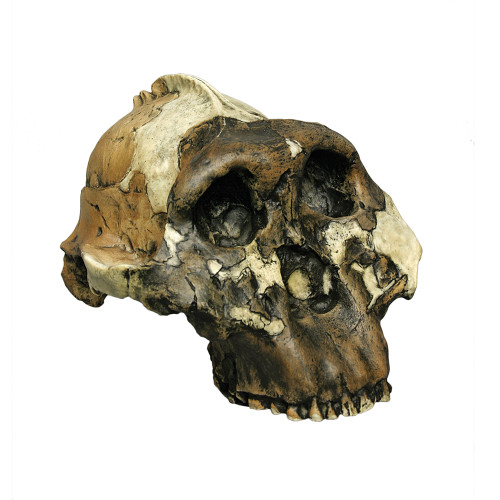Australopithecus boisei skull OH 5 (Zinjanthropus) with jaw (1.8 million years).
The Australopithecus boisei skull, Nutcracker Man, is the most famous fossil from Olduvai Gorge, Tanzania.
Australopithecus boisei OH 5 was discovered by Mary Leakey in 1959 and originally classified as Zinjanthropus boisei by L. Leakey in Nature later that year.
The accepted genus name has since changed to Australopithecus.
This discovery spurred paleoanthropology toward a modern, multidisciplinary approach, and focused paleoanthropologists' attention on East Africa.
Unique in hominid evolution, A. boisei's massive skull features a wide, concave face, enormous, flat molars (about 4 times as big as modern H. sapiens) and cranial adaptations for powerful chewing, hence its nickname, Nutcracker Man.
Note the sagittal crest and extremely large area for muscle attachments on the zygomatic arch.
The thick jaw allowed for the species' exceptional chewing capabilities.
Cranial capacity of this individual is 530cm3.
This recreation is based on Leakey casts and photographs in the book From Lucy to Language.
In this version, the jaw is attached by springs to the palate, allowing ease in handling.
The springs can be easily attached and detached.
Notes:
- A stand is available by enquiry, sold separately
- A half-scale version of this skull is available







